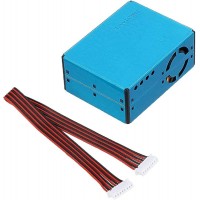The LR Series Circuit |
|
In the first tutorial about Inductors, we looked briefly at the time constant of an inductor stating that the current flowing through an inductor could not change instantaneously, but would increase at a constant rate determined by the self-induced emf in the inductor. In other words, an inductor in a circuit opposes the flow of current, ( i ) through it. While this is perfectly correct, we made the assumption in the tutorial that it was an ideal inductor which had no resistance or capacitance associated with its windings. However, in the real world "ALL" coils whether they are chokes, solenoids, relays or any wound component will always have a certain amount of resistance no matter how small associated with the coils turns of wire being used to make it as the copper wire will have a resistive value. Then we can consider our simple coil as being an "Inductance" in series with a "Resistance", in other words an LR Series Circuit. |
|
An LR Series Circuit consists basically of an inductor of inductance L connected in series with a resistor of resistance R. The resistance R is the DC resistive value of the wire turns or loops that goes into making up the inductors coil. Consider the LR series circuit below |
|
|
The LR Series Circuit |
|
|
| The above LR series circuit is connected across a constant voltage source, (the battery) and a switch. Assume that the switch, S is open until it is closed at a time t = 0, and then remains permanently closed producing a "step response" type voltage input. The current, i begins to flow through the circuit but does not rise rapidly to its maximum value of Imax as determined by the ratio of V / R (Ohms Law). This limiting factor is due to the presence of the self induced emf within the inductor as a result of the growth of magnetic flux, (Lenz's Law). After a time the voltage source neutralizes the effect of the self induced emf, the current flow becomes constant and the induced current and field are reduced to zero. |
|
We can use Kirchoffs Voltage Law, (KVL) to define the individual voltage drops that exist around the circuit and then hopefully use it to give us an expression for the flow of current. |
|
Kirchoffs voltage law gives us: |
|
V(t) = VR + VL = 0 |
|
The voltage drop across the resistor, R is IR (Ohms Law). |
|
VR = I x R |
|
The voltage drop across the inductor, L is by now our familiar expression L = di/dt |
|
VL = L(di/dt) |
|
Then the final expression for the individual voltage drops around the LR series circuit can be given as: |
|
V(t) = I x R + L(di/dt) |
|
We can see that the voltage drop across the resistor depends upon the current, i, while the voltage drop across the inductor depends upon the rate of change of the current, di/dt. When the current is equal to zero, ( i = 0 ) at time t = 0 the above expression, which is also a first order differential equation, can be rewritten to give the value of the current at any instant of time as: |
|
|
Expression for the Current in an LR Series Circuit |
|
|
|
Where: V is in volts, R is in ohms, L is in henries, t is in seconds and e is the base of the Natural Logarithm = 2.71828 |
|
The L/R term in the above equation is known commonly as the Time Constant, ( τ ) of the LR series circuit and V/R also represents the final steady state current value in the circuit. Once the current reaches this maximum steady state value at 5τ, the inductance of the coil has reduced to zero acting more like a short circuit and effectively removing it from the circuit. Therefore the current flowing through the coil is limited only by the resistive element in Ohms of the coils windings. A graphical representation of the current growth representing the voltage/time characteristics of the circuit can be presented as. |
|
|
Transient Curves for an LR Series Circuit |
|
|
| Since the voltage drop across the resistor, VR is equal to IxR (Ohms Law), it will have the same exponential growth and shape as the current. However, the voltage drop across the inductor, VL will have a value equal to: Ve(-Rt/L). Then the voltage across the inductor, VL will have an initial value equal to the battery voltage at time t = 0 or when the switch is first closed and then decays exponentially to zero as represented in the above curves. |
|
The time required for the current flowing in the LR series circuit to reach its maximum steady state value is equivalent to about 5 time constants or 5τ. This time constant τ, is measured by τ = L/R, in seconds, were R is the value of the resistor in ohms and L is the value of the inductor in Henries. This then forms the basis of an RL charging circuit were 5τ can also be thought of as "5 x L/R" or the transient time of the circuit. |
|
The transient time of any inductive circuit is determined by the relationship between the inductance and the resistance. For example, for a fixed value resistance the larger the inductance the slower will be the transient time and therefore a longer time constant for the LR series circuit. Likewise, for a fixed value inductance the smaller the resistance value the longer the transient time. However, for a fixed value inductance, by increasing the resistance value the transient time and therefore the time constant of the circuit becomes shorter. This is because as the resistance increases the circuit becomes more and more resistive as the value of the inductance becomes negligible compared to the resistance. If the value of the resistance is increased sufficiently large compared to the inductance the transient time would effectively be reduced to almost zero. |
|
|
Example No1 |
|
A coil which has an inductance of 40mH and a resistance of 2Ωs is connected together to form a RL series circuit. If they are connected to a 20V DC supply. |
|
a) What will be the final steady state value of the current. |
|
|
|
b) What will be the time constant of the RL series circuit. |
|
|
|
c) What will be the transient time of the RL series circuit. |
|
|
|
d) What will be the value of the induced emf after 10mS. |
|
|
|
e) What will be the value of the circuit current one time constant after the switch is closed. |
|
|
| The Time Constant, τ of the circuit was calculated in question b) as being 20mS. Then the circuit current at this time is given as: |
|
|
|
You may notice that the answer for question (d) which gives a value of 6.32 Amps at one time constant, is equal to 63.2% of the final steady state current value of 10 Amps we calculated in question (a). This value of 63.2% or 0.632 x IMAX also corresponds with the transient curves shown above. |
|
|
Power in a LR Series Circuit |
|
Then from above, the power in a LR series circuit is given as: |
|
The instantaneous rate at which the voltage source delivers power to the circuit is given as: |
|
P = V x I in Watts |
|
The instantaneous rate at which power is dissipated by the resistor in the form of heat is given as: |
|
P = I2 x R in Watts |
|
The rate at which energy is stored in the inductor in the form of magnetic potential energy is given as: |
|
P = Vi = Li(di/dt) in Watts |
|
Then we can find the total power in a RL series circuit by multiplying by i and is therefore: |
|
P = i2R = Li(di/dt) Watts |
|
where the first term represents the power dissipated by the resistor (heat) and the second term represents the power absorbed by the inductor (magnetic energy). In the next tutorials of inductor, we will take a look at Inductive Reactance. |
|
|
|
Reproduced with permission from Wayne Storr |
|
http://www.electronics-tutorials.ws/inductor/LR-circuits.html |









